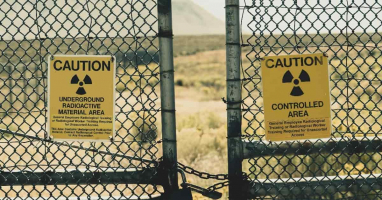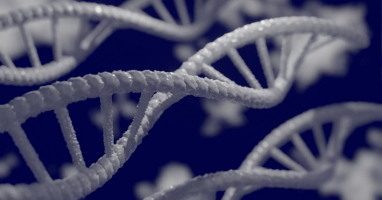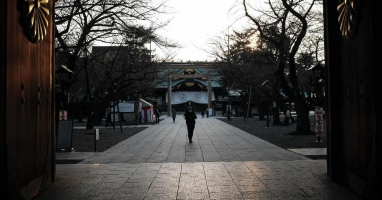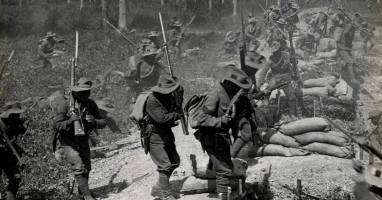I wrote this article in Japanese and translated it into English using ChatGPT. I also used ChatGPT to create the English article title. I did my best to correct any translation mistakes, but please let me know if you find any errors. By the way, I did not use ChatGPT when writing the Japanese article. The entire article was written from scratch by me, Saikawa Goto.
Introduction
Movies and books covered in this article
Three takeaways from this article
- This non-fiction book is both shocking and easy to read, and probably like no other.
- In order to “prove that it is a serial murder case,” he did a superb feat of “proving the false accusation of the ‘Ashikaga murder case'”.
- It raises important questions about how we should relate to power and the media.
Self-introduction article


Published Kindle books(Free on Kindle Unlimited)
“The genius Einstein: An easy-to-understand book about interesting science advances that is not too simple based on his life and discoveries: Theory of Relativity, Cosmology and Quantum Theory”
“Why is “lack of imagination” called “communication skills”?: Japanese-specific”negative” communication”
The quotes in the article were translated using ChatGPT from Japanese books, and are not direct quotes from the foreign language original books, even if they exist.
I Feel that There may be No Non-Fiction Work that Exceeds This One in Terms of “Ease of Reading” and “Impact”
The Tremendousness of “殺人犯はそこにいる(The Murderer is There)” that has Spread as “BunkoX”

When I read this book, I knew almost nothing about the case, the author, or the work itself. I had vaguely heard the title “殺人犯はそこにいる(The Murderer is There)” but that was about it. I read the paperback version, but I vaguely remembered it being a topic of conversation when the hardcover was released (In Japan, hardcover editions are often released first, followed by a paperback edition a few years later). I also vaguely recognized the “Ashikaga murder case” that was discussed in the book. I had some memory of news about the person who had been arrested as the perpetrator being released, but I was surprised to learn that the author of this book was the one who made that happen. I didn’t know anything about the author either. He is the person who exposed the “darkness of the police” with “Okegawa stalker murder case” and later triggered the enactment of “stalker regulation,” but I had never heard of his previous book, “桶川ストーカー殺人事件 遺言(Okegawa Stalker Murder Case -Testament-),” which was the previous work of “殺人犯はそこにいる(The Murderer is There)”.
I read the book in a state of complete ignorance, and I was overwhelmed by its intensity.


There is an expression to evaluate how interesting a book is: “can’t stop turning the pages.” I used to think it was just an exaggeration, as I’ve read a lot of books but never experienced it myself.
However, when I read this book, my hand literally couldn’t stop turning the pages. It’s hard to say if it’s “interesting,” but it’s definitely a feeling of “I can’t wait to find out what happens next.”

Furthermore, although this book is a non-fiction, it is incredibly easy to read. I read a lot of non-fiction books and don’t usually feel that “non-fiction is difficult to read”, but people who read novels tend to find non-fiction harder to get into.
However, this book is so easy to read that even people who are not good at non-fiction would say they can “definitely read it.” This is proven by the fact that this book became widely popular as “BunkoX” (a sales plan for a book that became a bestseller in Japan by hiding the book cover and selling it without revealing the title).
When reading reviews of “BunkoX,” many people say they read non-fiction for the first time through it. And these people also highly praise this book. As for me, I am somehow happy that this book has reached even more people through the sales plan.

The book describes an “unsolved case” named “North Kanto serial little girl kidnapping murder case” by the author. Surprisingly, the author identified the “real culprit” through his own investigation and informed the police. However, for reasons pointed out in the book, the criminal has not been arrested.
You might feel like “this is not related to me” when you hear this. You might think that you don’t live in Kanto and the fact that the “real culprit” hasn’t been arrested won’t affect your life.


However, as you will understand by reading this book, by no means is this the only problem. What this book presents is the reality of “the precarious ground we are standing on”. The reason why the “real culprit” that the author named “Lupin” has not been arrested, is a problem that concerns all Japanese citizens. It can be said that whether we understand the “precarious ground” shown in this book, including the reason for this, will undoubtedly have an impact on our future lives.

I will touch on the details later, but first, let me quote a sentence that condenses the genesis, circumstances, and conclusion of the case described in this book. You should give you an idea of the book’s incredible nature just by reading this passage.
Have you understood by now, by reading this far, that the “North Kanto serial little girl kidnapping murder case” has been buried? Despite the disappearance of five young girls, this country’s judiciary system threw an innocent man in jail for 17 and a half years and let the true culprit go free. Doubts were raised in the media, Sugaya himself, who was thrown in prison, the victim’s families demanded a resolution, numerous members of parliament investigated the issue, the chairman of the National Public Safety Commission promised to investigate, the prime minister gave instructions. The culprit’s DNA can be tested any number of times. The statute of limitations can be broken. I have already demonstrated this. Nevertheless, the case is on the verge of disappearing into darkness.

The Relationship Between the “North Kanto Serial Little Girl Kidnapping Murder Case” and the “Ashikaga Murder Case,” and the Author’s Reckless Challenge
Firstly, let’s briefly touch upon the overview of the “North Kanto serial little girl kidnapping murder case” that is covered in this book, including the author’s approach to the investigation.

As a weekly magazine journalist, Shimizu Kiyoshi covered the “Okegawa stalker murder case.” He then moved to Nippon Television Holdings and became involved in reporting on cases again. It was there that Shimizu Kiyoshi “discovered” the five cases of young girl kidnapping and murder that occurred in the narrow border area between Tochigi and Gunma prefectures. The crimes occurred within a very small area and a short period of time, which naturally led to the assumption that they were the work of the same perpetrator.

However, the idea that the same person may have committed all five crimes has never been seriously considered. The reason for this is very clear, and it is related to the “Ashikaga murder case.”

However… My hypothesis had a fatal flaw. I noticed it from the beginning, but I deliberately ignored it and continued my investigation. Even a fake journalist like me noticed the five “consecutive major incidents”, so the police and other media must have known about it, and if they had noticed it, they wouldn’t have been silent. The reason why it wasn’t talked about until now is that there was a decisive reason for it. Namely, one of the incidents had already been “solved” with the “culprit” arrested.
In other words, it was recognized that one of the five consecutive kidnapping cases that the author “discovered” has already been resolved, and the culprit of that incident, Sugaya Toshikazu, has been arrested, sentenced to life imprisonment, and imprisoned.

If you think about it normally, it’s unreasonable to claim that “the five kidnapping and murder cases were committed by the same person” in light of this fact. The author himself also thought so, of course.
But suppose that, just suppose, even if it’s a million to one, Sugaya was a victim of a false accusation…. I knew very well that this was a dangerous “delusion” for a reporter. I also have had a lot of experience. I know that a false accusation is not something that happens often. The conviction rate in criminal cases in Japan is 99.8%. And this time, the evidence is a luxurious set of “confession” and “genetic fingerprinting”. It would be a landmine that even a decent reporter would not want to look at.
There is almost no way that Sugaya Toshikazu could be falsely accused in the case where “confession” and “genetic fingerprinting” are both exist. And if the “Ashikaga murder case” was resolved as Sugaya Toshikazu’s crime, the author’s hypothesis of the “North Kanto serial little girl kidnapping murder case” cannot be established. At this point, normally, one would give up the hypothesis of the “North Kanto serial little girl kidnapping murder case.”

However, the author did not give up.


There’s something that needs to be done – first, I need to “eliminate” Sugaya from this case. His presence in the “North Kanto serial little girl kidnapping murder case” is just a “hindrance.” It will only make things more complicated. Just because he was found guilty, the other four cases were left unresolved. Unless his false accusation is proven, the investigative agency will not look for the real culprit.
The only way to fix this is to prove Sugaya’s false accusation. Or perhaps, as the girls told me in their dreams, I can outsmart the investigative agency and find the real culprit first.
Well, either way works.
Nevertheless, what I tried to depict in this book is that the “Ashikaga murder case,” which has proven to be a false accusation, was not the end station but the starting line. It’s about uncovering the unknown “North Kanto serial little girl kidnapping murder case,” the ‘real culprit’ who is being confined in the shadows, and a certain “bomb.”
The author took on the task of proving the existence of the “North Kanto serial little girl kidnapping murder case” by proving the false accusation of Sugaya Toshikazu. Thanks to the efforts of Shimizu Kiyoshi, the case was proven with “confession” and “genetic fingerprinting,” and the false accusation of Sugaya Toshikazu was proven. He was successfully released from prison after 17 and a half years, an unprecedented development before a “retrial” was held. I do vaguely remember from my memory that the false accusation of the “Ashikaga murder case” was proven in a TV news report. It should have been covered quite extensively at the time.

Shimizu Kiyoshi forcefully pried open many doors that would not normally be opened, demonstrating an incredible journalistic pursuit.
If I want to question the “investigation” of the professionals who fingered Mr. Sugaya as the “culprit,” I must do a better coverage than they did.
I do not take any document at face value. Police and prosecutorial statements and opening statements are written in such a way so as not to contradict of the accused as a murderer. The news reports are based on information from the judiciary. Defense lawyers create documents to defend the defendant. I am a journalist. I do not conduct interviews or write for someone’s benefit. I must be guided by the facts. To put it in an immature way, “truth” is the only thing I need. When there are conflicting opinions, I was taught to listen to both sides when I started this profession.


During such reporting, shocking facts were revealed that made even the proof of Sugaya Toshikazu’s false charge seem “not a big deal.” These “unbelievable truths” written as “bombs” by the author are something that we are also not unrelated to. I hope you will read this as “something relevant to me”.

If you read this book, you should understand that the author conducted a tremendous investigation before writing it. There is a description in this book that may make you feel frustrated if you keep that in mind. It says that a commercial television reporter protested to Sugaya Toshikazu’s defense team,
Why do you give preferential treatment only to Nippon Television Holdings?
There was a journalist who expressed the situation as “giving preferential treatment,” which I cannot understand a little bit, given that it was thanks to Shimizu Kiyoshi, who belongs to Nippon Television Holdings, that Sugaya Toshikazu’s false accusation was proven.
In the latter half of this article, it also touches on the “mass media” itself, but in any case, if the mass media does not approach the coverage with “pride,” the “truth” of the world will not be revealed. I feel scared that the stance like Shimizu Kiyoshi’s has been fading away from the current mass media.

The “Bomb” of DNA Type and “the Tyranny of Public Authority”
One of the most important facts revealed by the author’s intense investigation is the “genetic fingerprinting” that I introduced as one of the deciding factors in the conviction of Sugaya Toshikazu. The author found “deficiencies” in this scientific method. This may be the only part in the book that you may feel “difficult” due to the explanation of the “DNA type”, but the author explains it very easily, so please try your best to read it.
The “Ashikaga murder case” was actually the first case in which “genetic fingerprinting” was adopted as important evidence. Since the “Ashikaga murder case”, this “genetic fingerprinting” has been recognized as a powerful evidence. In other words, there have been numerous cases in the past where trials were concluded with “genetic fingerprinting” as decisive evidence. This is a very important point.
As a result, the author unexpectedly “opened Pandora’s box” by questioning the “genetic fingerprinting” in the “Ashikaga murder case”. This is because questioning the “genetic fingerprinting” in the “Ashikaga murder case” could lead to problems with many of the trial results that followed.

And the author thinks that this is the reason why “Lupin” hasn’t been arrested.
The police and prosecutors, once admitting the continuity of the case, do not even initiate an investigation and act as if the case itself does not exist.
Will the “North Kanto serial little girl kidnapping murder case” disappear like this?


In other words, what the author is showing in this book is not “the truth about a certain incident that happened in North Kanto,” but rather “defects in the justice system and police investigations” itself. You should be able to understand why I wrote that it concerns all citizens of the country.
Now, I think it’s necessary to write for a correct understanding, but the “genetic fingerprinting” criticized in this book and the “DNA fingerprinting” that is now commonly used are different things. Roughly speaking, it is enough to understand that “in the past, science and technology were still immature and could only identify ‘DNA type’ instead of ‘DNA’.” The book points out the problems with “genetic fingerprinting.”

I recommend reading this book to learn about the “bomb” that started with Sugaya Toshikazu’s wrongful conviction. Here, I will only reiterate the point that “the revelation of ‘genetic fingerprinting deficiencies’ shakes the legitimacy of ‘all trials in which genetic fingerprinting was offered as material evidence.'”
As a country, they surely do not want to fall into such a situation. To avoid this, the police try to cover up the facts with lies and deception to protect themselves. Shimizu Kiyoshi exposed such “concealed truth,” and the book chronicles the process.

The author looks back on the coverage of the “Okegawa stalker murder case” and writes as follows:
At that time, I learned how much the police would lie for their self-defense. I realized the reality of how the media is manipulated by the risky information flowing from the police. The wall created by the judiciary and the media is incredibly thick and solid. A mere reporter is truly powerless. I had to write a book just to convey a glimpse of that.
In the “Okegawa stalker murder case,” the police had received frequent consultations from the victimized woman who was killed. After the incident occurred, the police became desperate to demonstrate through “information manipulation” via the media that “the police were not at fault for the victim’s murder.” In the process, they even managed to distort the “entire structure of the case.”

And they did the same thing in the “Ashikaga murder case” and the “North Kanto serial little girl kidnapping murder case”. Shimizu Kiyoshi proved the wrongful charge in the “Ashikaga murder case,” which eliminated the obstacle in investigating the “North Kanto serial little girl kidnapping murder case.” However, the police did not act. So the author took action to search for the real culprit through his own investigation and ended up with “Lupin.” Even so, the police did not act. Although the police acknowledged a connection between the five consecutive kidnapping cases, the investigation was not conducted under the assumption that the five cases were the work of the same culprit at the time this book was written.
Perhaps the “bomb” that the author uncovered is also related to this.


The author sounds an alarm throughout this book, and one of them is summed up in the sentence,
It’s a terrible thing, and I once again realized that when the authorities and mass media get together, they can spread whatever they want to say throughout the world.

Let’s start with the story of “public power,” setting aside the topic of the mass media for later.
We come across cases such as the “Moritomo Gakuen scandal” where “public power has been unjustly used and inconvenient facts have been hidden or distorted (as inferred),” on a daily basis. Probably most of them are “cases where power was deliberately exercised,” and no matter what, they must be condemned. By revealing the facts and taking appropriate responsibility, we should be able to create a society where “public power” can exist in a healthy manner, and we ourselves must be aware and act accordingly to make that happen.

However, the issue of “genetic fingerprinting” addressed in this book is different. It is not something that was done intentionally. It was a result of “shortcomings that could not be anticipated at that time,” and objectively, I think it is an unavoidable event.
Shimizu Kiyoshi also takes a clear stance on this.
This book is an account of my one-sided thoughts and feelings toward those who are involved with people’s lives in various ways. Let me be clear that criticizing or holding individuals accountable is not the purpose of this book.
Everyone makes mistakes. I, of course, am no exception. We should correct our mistakes. We should identify the causes and do our best to prevent their recurrence.

That’s absolutely right. I make mistakes too, and nobody is perfect. I feel like there’s an increasing trend of criticizing people just for making mistakes, but like the author, I don’t think that’s productive. What’s important is preventing the same mistake from happening again, and working together with a common understanding of not repeating the same mistakes.

However, in the “North Kanto serial little girl kidnapping murder case,” the police chose to “cover up.”
But covering up doesn’t allow for correction. It only leads to repeated mistakes.
On the other hand, I don’t think it makes sense to blindly criticize “public power.” There should be people who are devoting themselves wholeheartedly for the country and citizens in every field, including the police, judiciary, and politics. It would be counterproductive to condemn all these people together.

However, this book makes us understand that it is still very important for us to put a stop to “public power” by taking an interest in it. The struggles of people like Shimizu Kiyoshi are not something that anyone can do. I know I could never do it. However, I think anyone can at least “know the facts and show that they are interested.”

The conclusion of this book, which includes the author’s reasoning, is that “those in power” may make a decision to let a serial killer (or suspected individual) for their own protection go unchecked.” We must live each day understanding this reality.
It is also a work that confronts us with that resolve.
The Importance and Difficulty of Properly Understanding the Facts

This book describes the process of proving the wrongful conviction of the “Ashikaga murder case,” as well as the well-known wrongful conviction case, the “Menda case.” Through the author’s experience with Menda Sakae, who was arrested and sentenced to death in the “Menda case,” we should realize the importance of “understanding the truth correctly.” It’s a bit long, but let me quote it.
I can’t forget when I interviewed Menda in 1983.
The expression is still vivid in my mind.
We had dinner together in Kumamoto city and took a taxi on the way back. Menda, who was looking out the window in the back seat, suddenly turned his face forward as if he remembered something and said,
“What do you think of Menda?”
The person who he asked was the driver. At that time, there was no one in Kumamoto who did not know about the “Menda case.” Menda continued,
“Is that person really the killer, or is he innocent?”
The driver holding the steering wheel couldn’t see the face in the dark back seat. He probably never thought that the person himself was in his car.
“Oh, Menda. He would be really the culprit. An innocent person wouldn’t be arrested. He wouldn’t have been sentenced to death. This time, he was acquitted, but… my acquaintance in the police also said so.” He laughed and turned the steering wheel.
“I see…” Menda lowered his gaze to his knees.
Can it be possible for a person to show such a lonely expression?

It is natural for the worlds of “justice” and “citizens” to be different. However, even if it goes against our intuition, we must have an attitude of accepting what has been determined as “truth” in the world of justice as “truth.” Of course, this attitude can also lead to “false charges,” so it is a double-edged sword. That is why there should also be a mechanism for “correcting mistakes.” Shimizu Kiyoshi’s reporting can be considered the pinnacle of this, but in reality, “mistakes” should be corrected without such a detour.

In any case, what is most important is that “we take an interest and understand correctly.”
Of course, it is impossible to be interested in all the “problems” in the world. However, if it is widely understood that “we are interested in ‘that problem’,” information about “that problem” will naturally flow into the world. In any era, “information that more people are interested in” is covered by the media, and of course, even if it is related to public welfare, it will not reach us as information if we do not show interest.

In other words, it can be said that “our interest” is what serves as “oversight of public power”. I think this is a very important understanding.
Now, we also have to think about “how to perceive information from the media”.
I’ll talk more specifically about “media issues” that Shimizu Kiyoshi concerns later, but first, let’s touch on the overall difficulty of that issue. In “People Like Us: Misrepresenting the Middle East” that I read before, there was a point made about how “the media cannot accurately convey ‘reality'”. To summarize the argument briefly, it goes like this: “The animals in a zoo and wild animals are different.”

As I wrote in the previous article, the author of “People Like Us: Misrepresenting the Middle East” was surprised by the gap between the “reality portrayed in the media” and the “reality actually seen.” It means that even if the information provider did not have the intention to “deliberately cause confusion,” the nature of the media can distort reality and convey it.
It would be easy to understand if you imagine it like this. We don’t often get to see wild animals. So we go to the zoo to see about them. But of course, the behavior of “animals in the zoo” and “wild animals” is completely different. There may also be differences due to the narrow environment of the “zoo”, and the impression of nocturnal animals may also be greatly different from that of the wild, as many visitors come during the day.


The media has a similar role. It is difficult to show the “facts themselves” as they are. So, they process it into a “more presentable and deliverable form” and broadcast it. However, this is like “bringing animals to the zoo” and it becomes something other than the “untouched appearance of wild animals (the facts themselves)”.

The less routine the reality, the more we need the help of the media to be informed. However, it is not appropriate to simply receive information from the media. We must understand this correctly and then deal with the “information”.
The “media problem” pointed out by the author in “殺人犯はそこにいる(The Murderer Is Ther)” can be said to be born of “unconscious malice,” and does not directly overlap with the problem I just described of “the difference between ‘animals in zoos’ and ‘animals in the wild. In any case, however, the lesson is the same: “We must be careful how we receive information from the media. The author’s warning should be heeded.

Shimizu Kiyoshi, Who is Also a Member of the Mass Media, Points Out the “Problem of the Mass Media.”
The author writes about his own stance as a “reporter.”
What is the purpose of journalism in the first place? I have been questioning myself this while covering this event. For a professional journalist, it is natural to gather and report news. Some may think that it is enough to do what is worth the salary. But my thinking is a little different. (omission) Anger and screams from power and titles resonate even if we leave them alone. However, small voices are different. They do not reach the country or society. It may be the mission of journalism to become a bridge for that.

So Shimizu Kiyoshi always listens to the “small voice”.
And above all, “listen to the smallest voice”–. That is my first rule of journalism, and in other words, it can even be called a “restriction”. In this case, it is the voice of the Mami-chan who was killed at the age of four, and only the parents can speak for her.
In the past, the coverage of victims was also severe, not just the perpetrators, to the extent that the term “Damage from Media” was coined. The situation would has changed considerably under the name of “compliance” today. However, even if that is the case, I don’t think the “distrust of the media” felt by the victims has decreased in the same way.


The author approaches the victims’ families, knowing they might be insulted, in order to pick up the “small voice.” This is Shimizu Kiyoshi’s “pride,” as picking up the “small voice” is crucial.

For the author, “media coverage” only brings a sense of discomfort.
The families of victims continue to regret their mistakes without needing to be pointed out by others. They have worried, cried, and lived with the fact that they took their beloved daughter, their most precious daughter, to a pachinko parlor. Simply hearing the word “pachinko” in their daily lives has caused them so much pain. Is it necessary for the media to push these people further and make people feel at ease by saying “it’s not related to us”?
It’s just right. If this is a crime committed by a person with malice, then reporting that refers to mistakes on the part of the victims is meaningless. There may be cases where the victim is at fault, but in most cases, the incident occurs regardless of the victim’s behavior.

The value of “reporting” as the author sees it is clear.
I think.
There is only one reason for the existence of incident and accident reporting.
In my opinion, significance in reporting on a victim by his or her real name and causing grief to the bereaved family would be only this.
That is to prevent recurrence.
Never again should the girls disappear.
That is why we need to get to find out the truth.
I really think so. The only justification for forcing “pain” on the victim side to reveal the full extent of the incident is “prevention of recurrence.” I only feel discomfort and even feel that it is “wrong” when I see coverage that doesn’t seem to recognize this point.
Even in the eyes of the author who is looking at the media from the inside, it seems that many of the media do not aim for “prevention of recurrence” or “uncovering the truth.” The job of the current media is only to disseminate the announcements of the “OKAMI (the authorities)” police. In the coverage of incidents and accidents, it is said that the atmosphere of “it cannot be reported unless it is information guaranteed by ‘OKAMI (the authorities)'” is spreading in the media.

Therefore, there are few media outlets that report in a way that would make “OKAMI (the authorities)” their enemy.
In the first place, there are few reporters or major media outlets that report the possibility of a wrongful conviction in a criminal case. Especially even fewer reporters challenge the final judgment. It’s because it becomes a report that directly confronts the “state”. The police who arrest suspects. The prosecution who prosecute. If a judgment was issued, the court. It will inevitably face one or more of these, or perhaps all of them.

In other words, the information that is reported by the media is nothing more than what OKAMI (the police) wants to release. If OKAMI (the police) intends to conceal something, it can easily be achieved. It doesn’t matter whether the media has the intention to assist the authorities or not. The various structures and environments surrounding the media inevitably create a situation that is advantageous to those in power.

In the first place, it is dangerous to uncritically accept any information, no matter what it is. Furthermore, it is important for information recipients to understand that “concealment by the authorities can seep into media information structurally.”

Although this book is a non-fiction work about an incident, it also devotes pages to the “aspects” and “subsequent events” of the incident, as well as the “actions of the journalist,” because I wanted people to know that there is actually a lot of information buried behind the news that flows every day.
Shimizu Kiyoshi’s reporting began by focusing on individual incidents, but his efforts also led to uncovering more comprehensive and larger issues. It is a work that gives us a glimpse of what kind of “reality” we are living in.
Conclusion

I don’t mean to sound high and mighty. I’ve made a ton of mistakes. I have no choice but to persist doggedly. I have no power or money, and as a guy clinging to the fringes of the media, there’s not much I can do.
We should understand these words from the perspective of Shimizu as a weekly magazine journalist, not as a Nippon Television Holdings employee. During the “Okegawa stalker murder case,” he was unable to access information from the police because he was not a member of the press club. Despite such constraints, he was able to carry out investigative reporting that moved society. Even after moving to Nippon Television Holdings, he continued to exhaustively pursue thorough investigations while wearing out his shoes to an extent that I can’t express enough by the words “GENBAHYAPPENN (visiting the scene 100 times = the basis of investigations is on-site)”.

The author like that is now in such a situation that he says, “I have no other means left but to publish my book. He tried everything, but the police and justice system did not move. Therefore, we citizens have no choice but to take over. If we show a strong interest, the authorities will have no choice but to give in. If nothing changes even after that, I think we will have to give up on “Japan, a country under the rule of law” itself.
This book is like a baton entrusted to us by Shimizu Kiyoshi.
What can we do?

Published Kindle books(Free on Kindle Unlimited)
“The genius Einstein: An easy-to-understand book about interesting science advances that is not too simple based on his life and discoveries: Theory of Relativity, Cosmology and Quantum Theory”
“Why is “lack of imagination” called “communication skills”?: Japanese-specific”negative” communication”








コメント